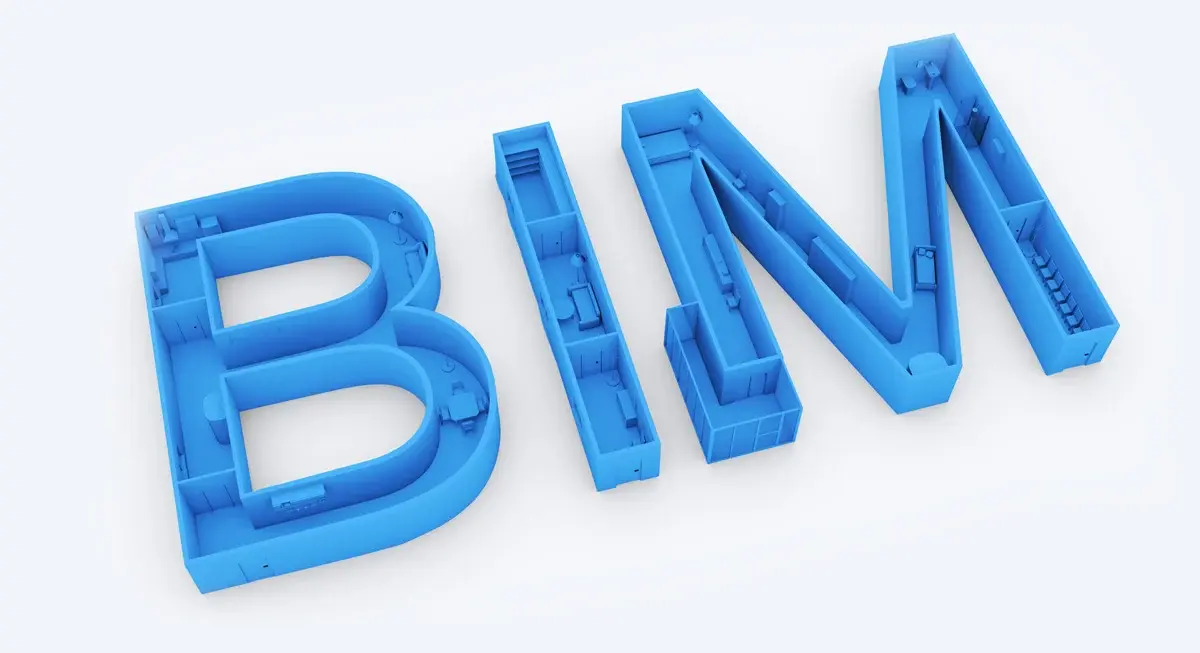
Employee training is critical for any organisation’s growth. It upskills the workforce and also improves talent retention.
Yet, most AEC firms are reluctant to invest in training programmes because of the uncertainty in ROI. This situation arises due to the inability to measure the outcome.
Skills intelligence can help organisations create a guiding framework for assessing training programmes' needs, quality, and impact.
Explore how leveraging skills intelligence can give actionable insights, empowering you to make more informed and strategic decisions for maximum ROI.
Key Takeaways
- Career advancement is the leading reason for employees switching jobs.
- To improve the effectiveness of training, it must be engaging and relatable to the candidate’s job role, skill gaps, and competency.
- Skills intelligence can curate targeted training by creating custom assessments and custom learning paths.
- Workflow-based assessment accurately evaluates a candidate’s proficiency by evaluating both workflow and final output.
- Skills intelligence gives managers clear visibility of an organisation’s skills deficits and the quality of training programmes, making investment decisions easier.
Employee Training And Development
1. What is employee training?
Employee training, also known as corporate training, employee upskilling, or continued learning, involves initiatives by organisations to enhance workforce skills. Research consistently shows a strong correlation between effective employee development, increased job satisfaction, and reduced turnover rates. Nearly 80% of employees in architecture firms and civil engineering companies or bim consultancy services, believe that a well-structured training program enables them to achieve their professional goals, resulting in higher productivity and a clearer career advancement path. By investing in employee development, companies can improve overall performance and drive business growth and employee retention, creating a more engaged and committed workforce.

2. Employee Training and Development in the AEC Industry
Managers of architecture firms and civil engineering companies are aware of the advantages of employee development. 88% of AEC firms recognise that investment in training directly contributes to sustainable growth, surpassing the importance of technology investments (84%) and promoting remote work (77%).

Actions that help companies sustain growth (Source: Present & Future of Work in AEC, 2023)
Despite this awareness, many companies remain hesitant to allocate sufficient resources to employee training and development, and those that do often struggle to fully realise the return on their investment. The AEC industry faces significant challenges in implementing and optimising employee training programmes, hindering their ability to retain top talent and foster long-term growth.
Challenges faced by companies in employee development
Companies frequently encounter substantial obstacles in delivering effective training programmes, with budget constraints and employee resistance being among the most common challenges.
1. Budgetary Deficits
Budgetary constraints often arise due to a failure to effectively communicate the tangible benefits of employee training in terms of improving proficiency, efficiency, and productivity. Without a clear understanding and quantification of potential returns, companies struggle to justify financial investments in training and fail to prioritise it among other competing operational demands. This lack of alignment between training investments and measurable business outcomes often results in underfunded or poorly executed programmes.
2. Employee Resistance
Employee resistance to training is another significant barrier, often caused by the following key factors:

Challenges faced by employees and employers in employee development
- Generic Content: When training programmes offer generic or outdated content, employees tend to perceive them as boring and irrelevant. This can lead to training being viewed as a waste of time, rather than an opportunity for meaningful development.
- Lack of Relatability: Training that fails to incorporate real-world job examples tends to disengage participants, increasing resistance to the learning process.
- Perceived Irrelevance: If the content does not directly relate to an employee’s specific job, role, or daily tasks, they may not see the value in participating, reducing the programme’s impact.
- Skills Gap Awareness: Employees are often unaware of their skills gaps, leading them to underestimate the value of training. Without a clear understanding of how the training can address these gaps, willingness to learn is often negligible.
- Duration: Long training sessions that disrupt regular work schedules can frustrate employees, especially when training competes with high-priority tasks. This conflict reduces both enthusiasm and overall engagement.
These challenges create a significant disconnect between the desired outcomes of training investments and the actual results. As a result, companies may experience a waste of resources—both in terms of training costs and lost billable hours—while failing to realise the expected improvements in performance and productivity.
Possible Solutions
Companies must create practical and valuable training programmes to overcome employee resistance and improve ROI on training. The following strategies can help build a more engaging and effective learning environment:
- Skills Assessment: Conducting thorough organisation-level needs assessments is essential for identifying specific knowledge gaps and aligning training with organisational priorities. By identifying skills deficiencies, companies can ensure that training addresses the most relevant areas, maximising its impact.
- Tailored Training: Customising training programmes to fit the specific job roles, tasks, and competencies of employees enhances engagement. When training content is directly relevant to their daily tasks, employees are more likely to stay invested and retain the information longer.
- Visibility of Effects: Implementing pre-training and post-training assessments provides a measurable view of employee progress. This not only gives employees a sense of personal growth but also offers employers and trainers valuable insights into the effectiveness of the programme. Clear performance improvements reinforce the value of continued learning.
- Defined Objectives: Linking training content to workplace goals with well-defined objectives improves employee motivation. When employees can see how the training supports their role and the company’s broader mission, they are more likely to engage fully in the learning process.
- Hands-On Learning: Incorporating hands-on, workflow-based training ensures that learning is practical and directly applicable. Compared to lectures, practical exercises help employees retain information longer by reinforcing skills in real-world scenarios.
- Learning Culture: By integrating training programmes with performance appraisals, organisations can promote continuous upskilling and create a culture of learning and development.
By using skills intelligence, these strategies can be employed seamlessly, giving companies a more dynamic and engaging training environment, ultimately improving job satisfaction, productivity, and employee retention.
How Skills Intelligence Can Help

Features of Skills Intelligence
1. Tailored Pre-Training and Post-Training Assessments
Skills intelligence plays a crucial role in developing custom assessments and learning paths tailored to specific job roles and competencies. By conducting accurate skills assessments, companies can effectively evaluate employees both before and after training, mapping out skill gaps and improvements. Pre-training assessments help identify specific knowledge and skills deficiencies, while post-training evaluations measure progress and determine the effectiveness of the programme.
2. Custom Learning Paths
An accurate skills assessment allows for the creation of personalised learning paths that cater to each employee’s unique development needs. By directly addressing identified knowledge gaps, these customised paths provide clear, actionable insights into areas of improvement, making training more targeted, engaging, and effective.
3. Measure Workflow Efficiency
Engineering and architecture software, especially BIM software, are too complex to assess a candidate’s proficiency. Merely assessing knowledge is not enough to build a highly productive workforce. This is where skills intelligence becomes critical.. A robust skills assessment tool not only measures software knowledge but also evaluates workflow performance—such as speed, efficiency, and accuracy in task completion. This holistic approach provides a comprehensive understanding of an employee’s overall proficiency.
4. Improve Long-Term Knowledge Retention
A survey highlighted the challenge of long-term knowledge retention post-training. While candidates retained 85-90% of content immediately after training, retention rates dropped sharply to 40% after one day, 20-35% after one week, and 20-30% after one month. Implementing immediate and continuous evaluations can significantly improve retention, helping employees retain valuable information for longer, leading to more sustained performance.
By incorporating skills intelligence and continuous evaluation, companies can create more effective training programmes that lead to better workforce performance, higher engagement, and productive long-term results.
Current AEC Skills Assessments
In the Architecture, Engineering, and Construction (AEC) industry, skills assessments remain largely outdated and manual, in contrast to the more advanced, technology-driven methods employed in sectors like sales, technology, and manufacturing. The following are three common practices used for skills assessment in the AEC industry:
1. MCQs and MSQs
Multiple-choice (MCQ) and multiple-select (MSQ) formats are widely used in skills assessment platforms due to their ease of creation and the availability of question banks specific to competency, software, and tools. MCQs/MSQs are great for doing a quick assessment, covering an extensive breadth of software for architects and engineers, and getting a broad perspective of a candidate’s skill levels. However, the tests are often very theoretical and cannot measure a candidate's practical proficiency with the software.
2. Tool Tests
Tool tests are used by many mid to large-scale firms. They are practical and more effective than MCQs/MSQs in capturing technical proficiency. However, tool tests focus more on the final output (BIM model), than the workflow (the process of BIM modeling), meaning key details such as the tools and plugins used, amount of time taken, and any "fudging" in the process are often overlooked.
3. Technical Interviews
Technical interviews fall between theoretical and practical assessments. They can provide critical insights into a candidate’s knowledge and problem-solving skills. Almost all companies conduct at least one round of technical interviews with design/BIM managers. Yet, similar to tool tests, interviews cannot quantify a candidate’s proficiency with software and are very subjective.
Current skills assessment methods in the AEC industry—whether based on MCQs, tool tests, or technical interviews—are inadequate in providing a full picture of a candidate’s practical proficiency. These outdated formats fail to capture the complexity and immersive nature of AEC workflows. Skills assessment for architecture or civil engineering software for architects and engineers requires more sophisticated and holistic approaches to evaluate technical knowledge and software proficiency.

Positioning results of workflow-based assessment & archaic assessment
Workflow-Based Skills Assessment
The most effective way to assess AEC-specific skills is by placing candidates in a simulated real-world environment where both the objectives and evaluation focus on their proficiency with the workflow, rather than simply assessing knowledge or output.

Key parameters for workflow assessment
A workflow-based assessment evaluates candidates on four key parameters: knowledge of software, action sequence, speed, and accuracy/quality of final output. By conducting a workflow-based assessment, trainers and managers can comprehensively understand a candidate's technical skills and workflow proficiency. This holistic approach ensures that both the process and the result are measured, providing a more accurate evaluation of the candidate’s real-world competency.
Benefits of Workflow-Based Assessment
An interactive skills assessment tool offers multiple advantages for both candidates and employers, enhancing the overall evaluation process. Key benefits include:
- Accurate Evaluation: By evaluating the entire workflow, the tool offers a comprehensive view of the candidate’s technical skills, tool usage, and problem-solving approach.
- Engagement: Real-world job simulations engage candidates to perform tasks as they would in their actual roles, encouraging deeper involvement.
- Continuous Monitoring: Real-time monitoring enables a more accurate evaluation of gaps and inefficiencies that are often missed when only the final output is considered.
- Feedback: Powered by skills intelligence, the tool can generate a custom learning path based on the assessment results. This personalised feedback provides candidates with clear guidance on how to address their skill gaps and improve performance, making training more targeted and effective.
By incorporating these features, workflow-based assessment offers a more accurate and engaging evaluation that drives continuous improvement through tailored learning pathways.
Conclusion
Increase Training ROI Through Skills Insights

Provide Targeted Training Workflow
To maximise the ROI of training, employers must focus on two critical factors: the relevance of training and the engagement of candidates. Engagement is influenced by both the relevance of the training content and the methods used to deliver it. An effective skills assessment tool can significantly enhance the relevance of training by offering the following benefits:
1. Awareness:
The first and most important step in increasing employee engagement is making them aware of their skills gaps. When employees clearly understand their areas of weakness, they are more likely to recognise the need for training and its value.
2. Feedback:
Providing employees with a well-defined learning path helps them visualise their progression and sets clear objectives. A custom learning path based on their skills assessment ensures that they target the right areas for improvement, filling skills gaps more efficiently and effectively.
3. Results:
By comparing pre-training and post-training assessments, employees can see their progress and the direct impact of the training on their performance. This not only provides a sense of personal growth and achievement but also motivates continued learning.

Using a robust skills assessment tool not only boosts employee productivity by identifying specific training needs but also ensures that the training programs chosen are specific to the skills gaps of the workforce and hence are effective. Customised assessment and training can help increase employee engagement, improve program selection, and maximise the effectiveness of training programs.
Was this content helpful to you







